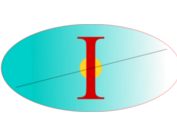Citation:
| eshet2016theory.pdf | 841 KB |
Abstract:
Multiexciton generation, by which more than a single electron–hole pair is generated on optical excitation, is a promising paradigm for pushing the efficiency of solar cells beyond the Shockley–Queisser limit of 31%. Utilizing this paradigm, however, requires the onset energy of multiexciton generation to be close to twice the band gap energy and the efficiency to increase rapidly above this onset. This challenge remains unattainable even using confined nanocrystals, nanorods or nanowires. Here, we show how both goals can be achieved in a nanorod heterostructure with type-II band offsets. Using pseudopotential atomistic calculation on a model type-II semiconductor heterostructure we predict the optimal conditions for controlling multiexciton generation efficiencies at twice the band gap energy. For a finite band offset, this requires a sharp interface along with a reduction of the exciton cooling and may enable a route for breaking the Shockley–Queisser limit.
Notes:
RBaer-Publication



